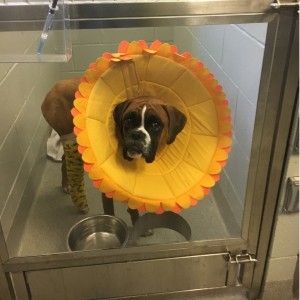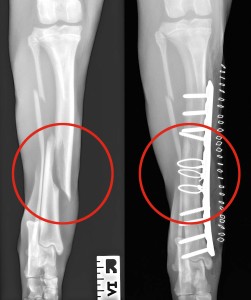-
Recent Posts
Archives
- October 2022
- August 2022
- May 2022
- March 2022
- January 2022
- December 2021
- September 2021
- July 2021
- June 2021
- May 2021
- April 2021
- February 2021
- January 2021
- November 2020
- October 2020
- September 2020
- June 2020
- April 2020
- March 2020
- February 2020
- January 2020
- December 2019
- November 2019
- October 2019
- September 2019
- June 2019
- March 2019
- February 2019
- January 2019
- December 2018
- November 2018
- October 2018
- August 2018
- July 2018
- June 2018
- May 2018
- April 2018
- March 2018
- February 2018
- January 2018
- December 2017
- November 2017
- October 2017
- September 2017
- August 2017
- July 2017
- June 2017
- May 2017
- April 2017
- March 2017
- February 2017
- January 2017
- December 2016
- November 2016
- August 2016
- July 2016
- June 2016
- May 2016
- April 2016
- March 2016
- February 2016
- January 2016
- December 2015
- November 2015
- October 2015
- September 2015
- August 2015
- July 2015
- June 2015
- May 2015
- April 2015
- March 2015
- December 2014
- June 2014
- May 2014
- April 2014
- November 2013
- September 2013
- August 2013
- July 2013
- June 2013
- May 2013
- March 2013
- January 2013
- November 2012
- October 2012
- July 2012
- December 2011
- November 2011
- October 2011
- September 2011
- August 2011
- July 2011
- June 2011
- May 2011
- April 2011
- March 2011
- February 2011
- January 2011
- December 2010
- November 2010
Categories
NorthStar VETS Cool Case Buster
The team at NorthStar VETS is doing innovative and amazing things every day as they work to advance the level of care available to your pet. This series of posts highlights cool cases at NorthStar VETS and the types of things done to save pets and improve their quality of life. These are cases using innovative and cutting-edge medical techniques, and/or stories of pets beating the odds. Read the story below in the doctor’s own words about the case. This is the story of Buster, a patient of Dr. Kelly Kraus of our Surgery team, and how she repaired this dog’s fractured leg.
About Buster
 Buster is a 1-year-old boxer puppy who jumped over a fence and unfortunately landed incorrectly on his hind leg. He sustained a fracture to his tibia and fibula. He came to see us for a consultation regarding fracture repair.
Buster is a 1-year-old boxer puppy who jumped over a fence and unfortunately landed incorrectly on his hind leg. He sustained a fracture to his tibia and fibula. He came to see us for a consultation regarding fracture repair.
How things went for Buster
Fractures of the tibia are not uncommon in dogs and cats, and most likely result from some sort of trauma (falls, road accidents.) Some of these fractures are amenable to treatment with a splint, which allows the bones to heal on their own. However, in a larger and active dog with a fracture such as Buster’s, surgical repair with open reduction and internal fixation with stainless steel surgical implants is a more stable option.

The implants allow the bones to remain in position for optimal healing. In most dogs, implants are not removed unless there are problems (like infection, implant migration, or implant failure.) Complications with fracture repair are more likely to occur if a dog does too much activity too soon after repair. In dogs and cats, bone healing typically takes at least 8 weeks – sometimes sooner in a very young dog.
Buster had surgery with a bone plate, screws, and cerclage wires to stabilize his fracture. He did very well under anesthesia and was able to go home to his parents the next day. Buster will be due back for follow-up xrays in 4 weeks to check on his bone healing and progression.
Learn more about the Surgery service at NorthStar VETS
 Kelly Kraus, VMD, DACVS
Kelly Kraus, VMD, DACVS
Dr. Kraus is originally from Connecticut. She obtained a Bachelor of Science degree from Loyola University in Baltimore, Maryland in 2003 before moving to Philadelphia, where she did molecular genetics research for two years at the University of Pennsylvania. Dr. Kraus then completed veterinary school at the University of Pennsylvania in 2009. After graduating, she completed a rotating internship at Oradell Animal Hospital in Paramus, NJ. She then moved to Texas to complete a one-year internship in surgery at Gulf Coast Veterinary Specialists. She was fortunate to then move back to New Jersey for a three-year residency in surgery at Red Bank Veterinary Hospital, which she completed in 2014.
She is excited to be part of the surgery team at Northstar Vets. Her special surgical interests include, but are not limited to, wound management and reconstructive surgery, surgical oncology, cardiothoracic surgery, and hepatobiliary surgery. Dr. Kraus also enjoys management of orthopedic conditions. She is trained in the tibial plateau leveling osteotomy (TPLO) for cranial cruciate ligament disease. Outside of work, Dr. Kraus enjoys spending time with her family, cooking, traveling, and helping her local SPCA.
The information presented on this web site is not intended to take the place of your family veterinarian’s advice and is not intended to diagnose, treat, cure or prevent any disease. Discuss this information with your own veterinarian to determine what is right for your pet. All information is intended for your general knowledge only and is not a substitute for medical advice or treatment for specific medical conditions. We can not and do not give you medical advice via this blog. The information contained in this online site and emails is presented in summary form only and intended to provide broad understanding and knowledge. The information should not be considered complete and should not be used in place of a visit, call, consultation or advice of your veterinarian. We do not recommend the self-management of your pet’s health problems.
This entry was posted in Pets, Veterinary Medicine and tagged Kelly Kraus, NorthStar VETS, veterinary surgery. Bookmark the permalink.





Leave a Reply